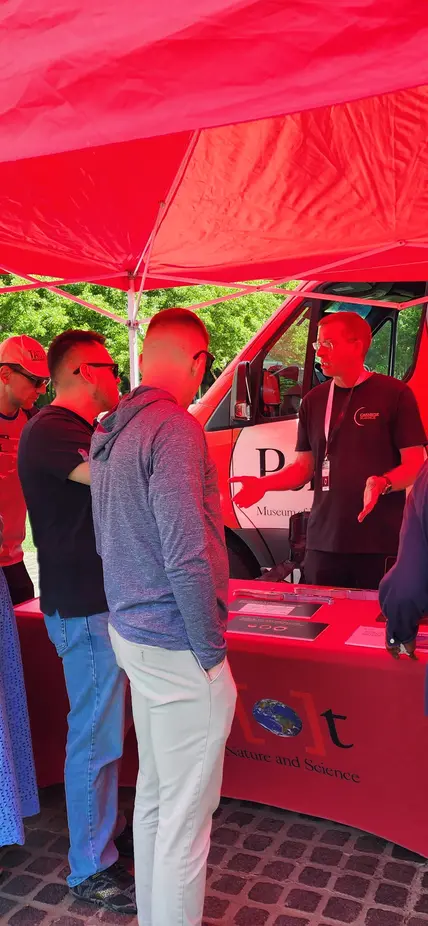All eyes turned to the sky this April as the Great North American Eclipse captured the nation’s imagination from coast to coast. Capitalizing on this public interest in astronomy, Carnegie Science partnered with the Perot Museum of Nature and Science in Dallas for six days of wide-ranging outreach programming.
The path of totality for April’s total solar eclipse passed over several densely populated areas across the country—including Austin, Dallas, Little Rock, Indianapolis, and Cleveland—leading to unprecedented curiosity about the Sun, the Moon, and the Solar System.
“The chance to witness a total solar eclipse on the path of totality—truly an unforgettable experience—presented an opportunity to engage K-12 students, and other Dallasites, about the excitement of astronomy and the joys of scientific discovery,” said Carnegie Science President Eric D. Isaacs.
To meet this thirst for knowledge, 29 Carnegie Science astronomers collaborated with Perot Museum employees and volunteers to visit more than 40 schools where they shared the wonders of the eclipse and advice on how to view it safely with more than 15,000 students.
“I myself fell in love with science as a child during the third grade and at the Hayden Planetarium in N.Y.C, which set me on the path to a career in physics,” Isaacs added. “Carnegie Science is eager to pursue outreach to our communities with the belief that this will inspire future generations of scientists."
Monumental Undertaking
Carnegie and Perot teams were able to reach another 17,000 people of all ages at North Texas parks, community centers, children’s hospitals, and cultural institutions through the museum’s robust mobile TECH truck program. Plus, Carnegie astronomers posted up every day in the museum’s Universe Hall, as well as at its Mars rover display, in order to answer any and every eclipse-related question that came their way from visitors.
“I arrived in Dallas a week before the eclipse and I noticed a distinct uptick in excitement about the once-in-a-lifetime nature of the event in the ensuing days, as our outreach efforts with the Perot moved into high gear,” said Carnegie Science Observatories Director John Mulchaey.
The eclipse trip represented Carnegie Science’s largest-ever in-person public engagement project and the culmination of more than two years of planning. Mulchaey, who is also Carnegie’s Deputy for Science, worked closely with Senior Manager of Leadership Experience Michelle Strobel and Community Outreach Manager Ana Lojanica to establish the parameters of the Perot partnership, as well as with Observatories Outreach Coordinator Jeff Rich and Carnegie Science Editorial Director Natasha Metzler on developing a suite of eclipse-related engagement products and tools.
Total solar eclipses on are possible on Earth because the Sun is 400 times larger than the Moon and also 400 times farther from us. This cosmic coincidence makes the two objects to appear to be the same relative size in our sky.
However, the apparent size of the Sun changes throughout the course of the year, depending on our planet’s position within its orbit. Likewise, the apparent size of the Moon changes throughout the month. This means that sometimes the Moon does not entirely block the Sun, an event called an annular eclipse.
There was one such phenomenon in Dallas last autumn, for which Mulchaey and Rich traveled to the city to officially kick off the Perot partnership and start building excitement for April’s big event.
Once-in-a-Lifetime
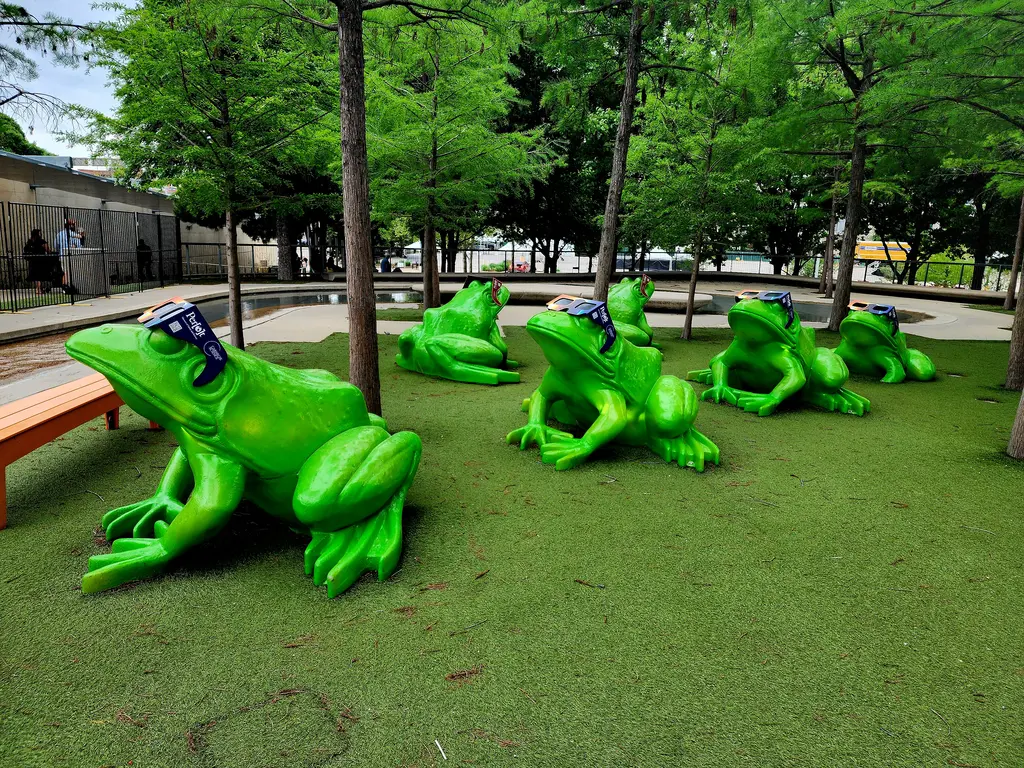
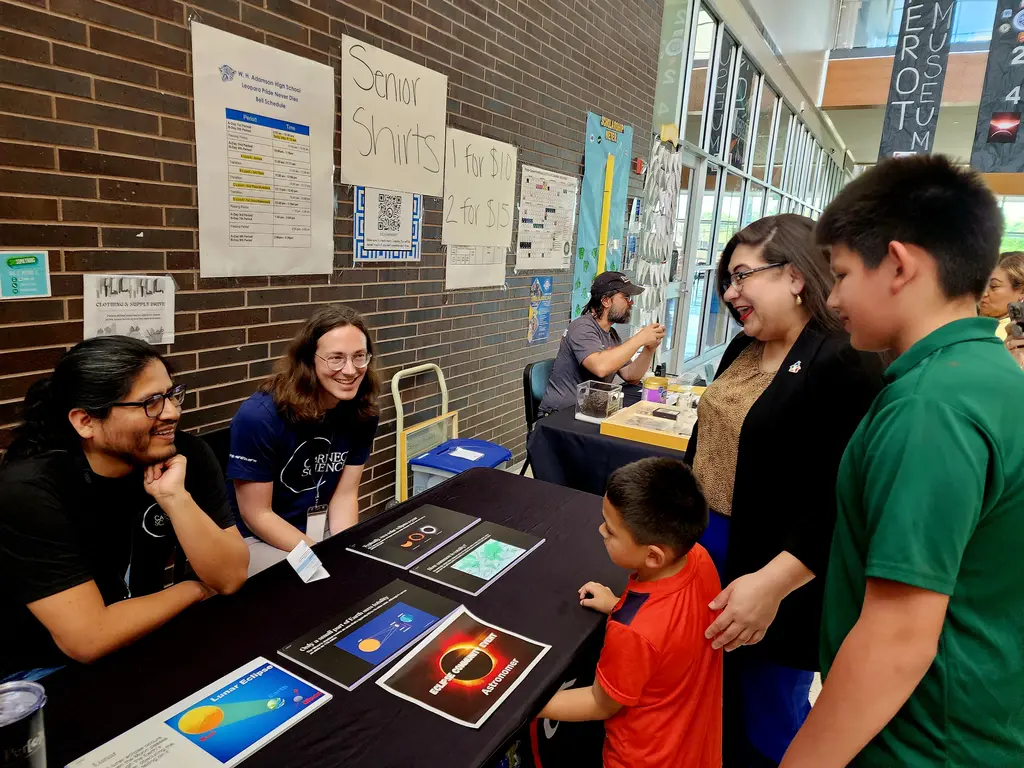
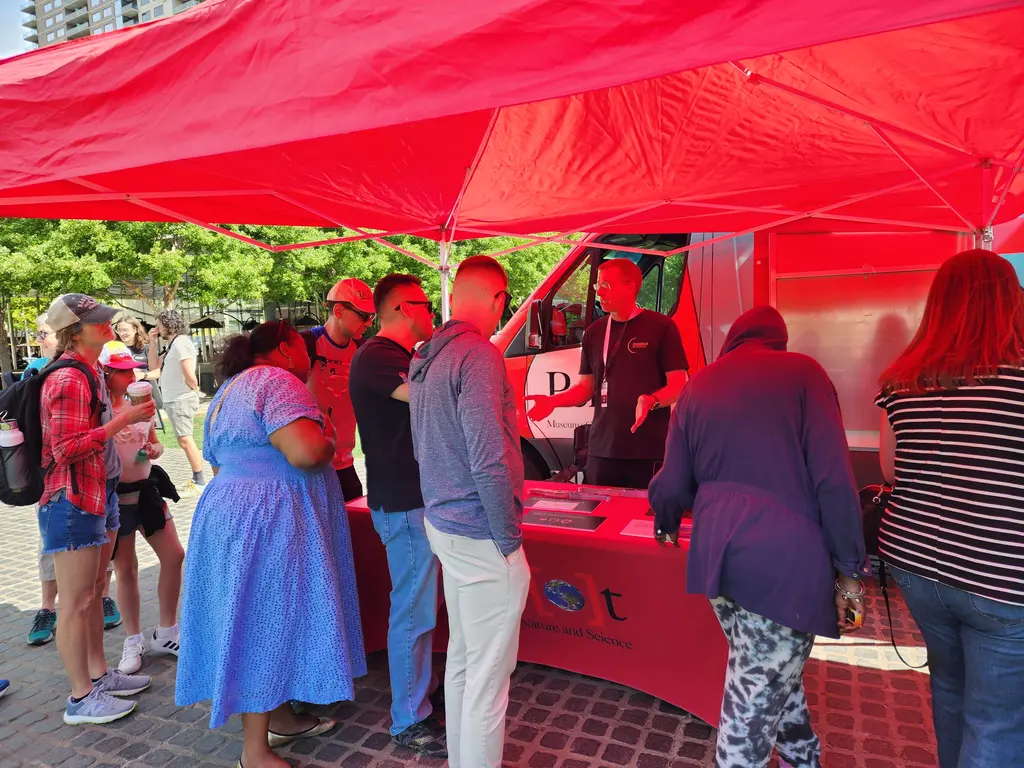
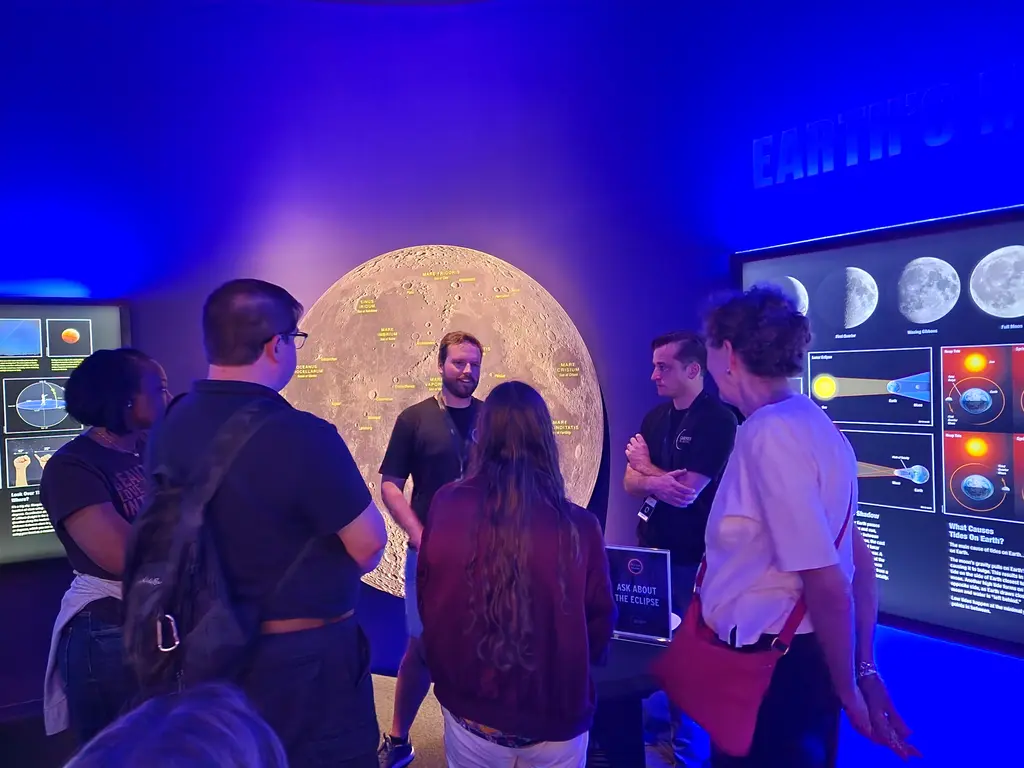

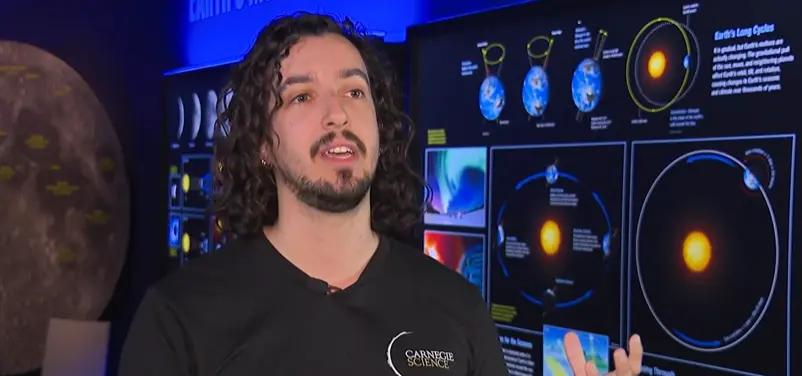

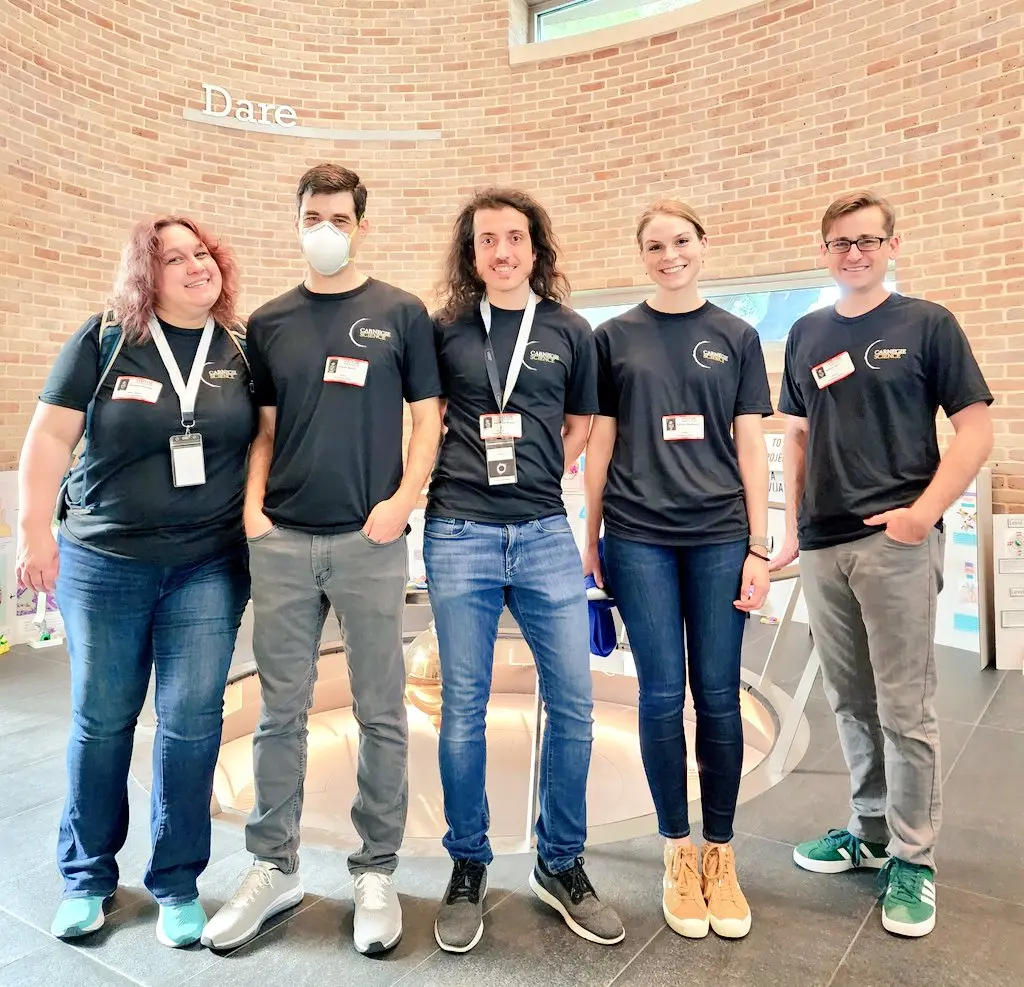
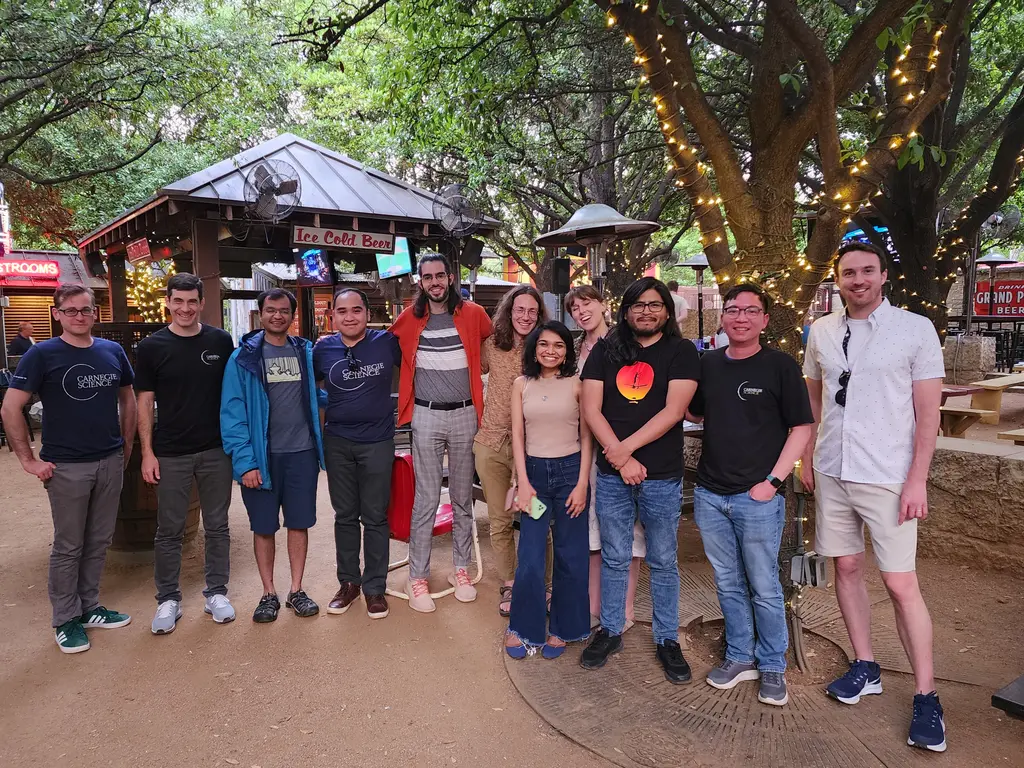
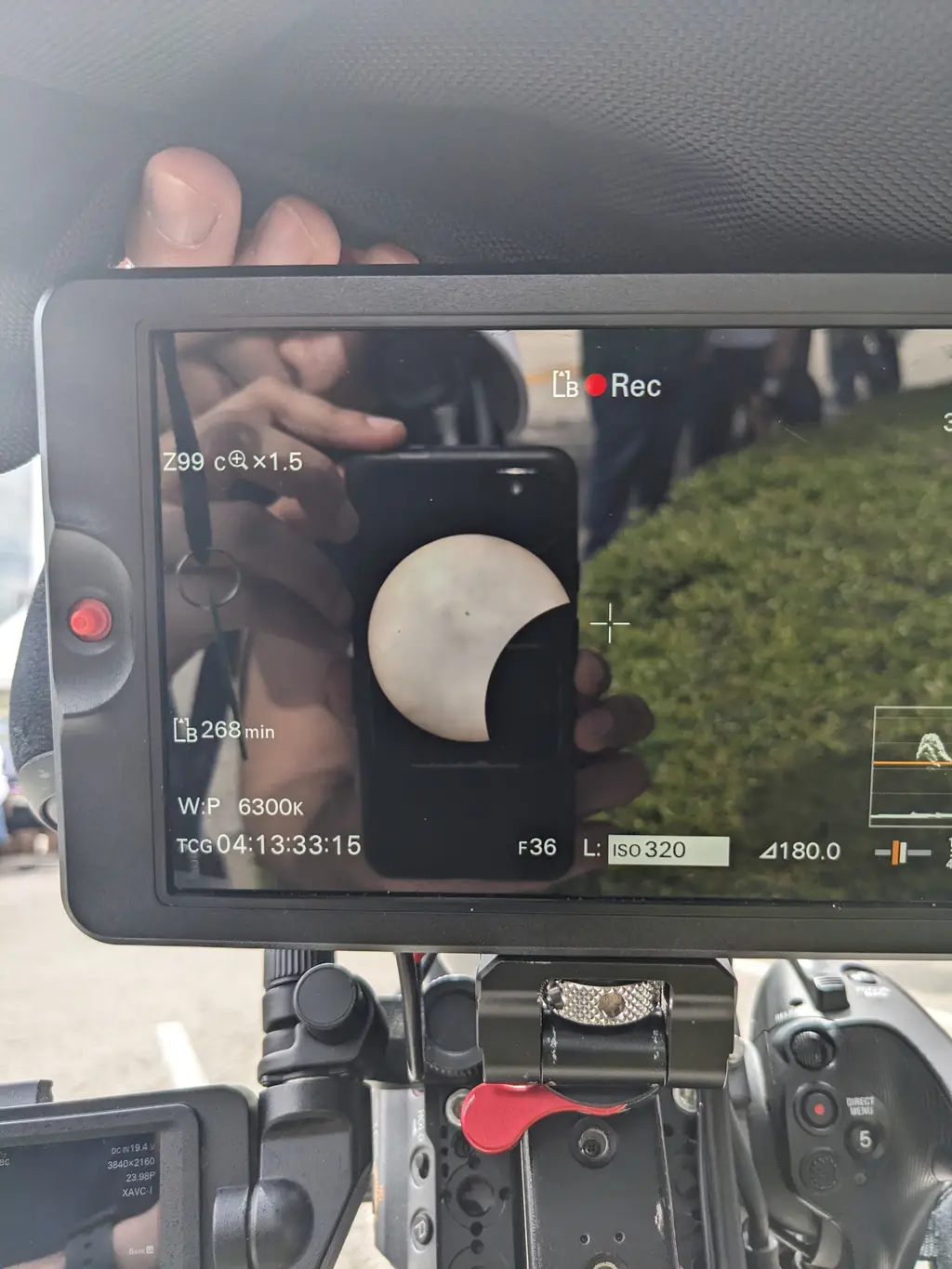

Dallas _ Perot Museum _ Frog.jpg
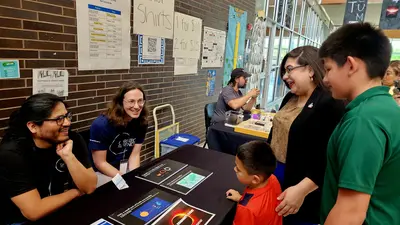
Dallas _ Community Event More.jpg
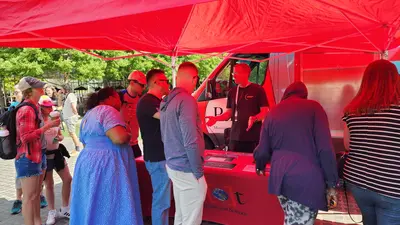
Dallas _ Tech Truck _ Dave.jpg
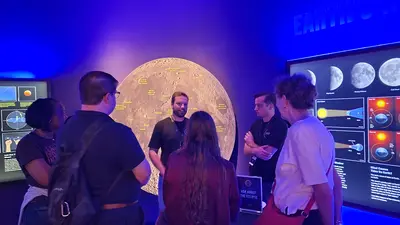
Dallas _ Perot Museum _ Jack.jpg

Dallas _ Church _ Shubham Kanodia.jpg
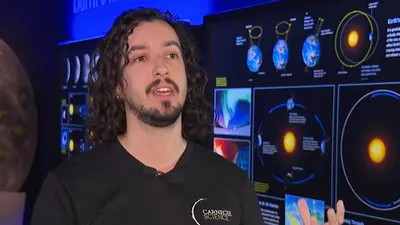
Dallas _ Perot Museum _ Tony.png

Dallas _ Today Show _ John.jpg
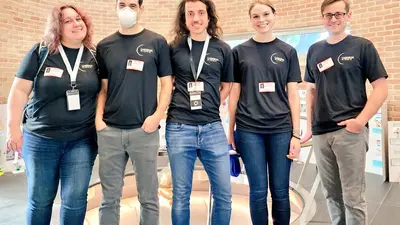
Dallas _ High School _ Volunteers.jpg
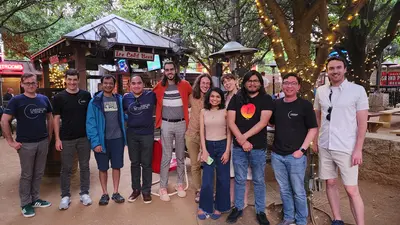
Dallas _ Carnegie Volunteers _ Dinner.jpg
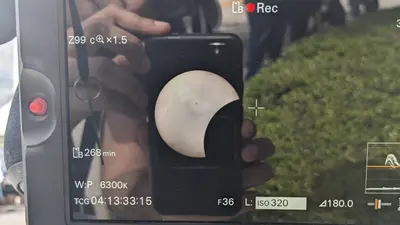
Dallas _ Eclipse _ Cell Phone.jpg
A Resounding Success
In the ensuing months, the Perot Museum distributed 1 million pairs of high-quality eclipse glasses throughout North Texas, ensuring safe viewing throughout the community. The two organizations also worked to spread the word about the total solar eclipse by becoming a go-to source for the local and national media, generating awareness and enthusiasm about the breathtaking event.
The efforts paid off as eclipse mania took hold in the city.
“Seeing how excited the kids were about the eclipse was so rewarding,” said Ebtihal Abdelaziz a USC graduate student doing work at Carnegie Science who was part of the 29-person outreach team. “A kid came up to me and said, ‘I want to be an astronomer like you when I grow up.’ That was the most precious thing ever! I often feel like I know so little because there is so much to learn. But it nourished my soul to answer everyone’s burning questions.”
The astronomers received a warm welcome everywhere they visited—from handmade banners to personal greetings from city officials.
“This week was one of the most significant of my life,” said Solange Ramirez, an astronomer and engineer who project manages the Sloan Digital Sky Survey’s fifth iteration at the Observatories. “The school visits, the community events, and the other outreach activities were extremely well organized and impactful, showing the huge benefit for partnering with an organization such as the Perot Museum, which has the community contacts and the logistical infrastructure needed for events at this scale.”
At each site, the Carnegie volunteers were able to select from a variety of educational materials to best meet the needs of the group they were addressing. Engagements ranged from presentations in school auditoriums, to hands-on activities, to answering an array of questions not just about the eclipse, but about all sorts of astrophysical mysteries—some of which are still unanswered.
“I was quite amazed as to how knowledgeable some of them were about astronomy, and often had excellent questions that left me stumped!” said Earth and Planets Laboratory postdoc Shubham Kanodia.
Because so many of the Carnegie volunteers were postdocs and other early career researchers, the Dallas trip also provided training opportunities for them in both public and media engagement.
“It felt like a crash course in doing outreach and I learned so much from the experience,” concluded Observatories postdoc Sachithra Weerasooriya.
The Big Day
Although April 8 dawned with low-hanging clouds blanketing Dallas—spreading anxiety among the assembled experts—the skies started to clear shortly after lunch, just as the Moon began its transit in front of the Sun.
Carnegie astronomers were fanned out at eclipse events across the city. The largest contingent stayed at the Perot Museum, where a large outdoor stage enabled them to share fun facts and safe viewing tips to the thousands assembled there. Others were on hand at a variety of parks and other public and private spaces throughout the region.
“There were clouds all morning, but in the end our view of the eclipse from the Perot Museum couldn't have been more perfect,” said Staff Scientist Gwen Rudie, who also leads the Observatories’ summer internship program. “I'll never forget the gasp of the crowd when we told them it was safe to take off their glasses to see totality, or the one when we announced they could see a solar flare just with the naked eye.”
The majority of Carnegie experts who traveled to Dallas were witnessing a total solar eclipse for the first time themselves—contributing to their excitement.
“Even if you know in great detail what’s going to happen, actually seeing the daytime sky ‘break’ in that way is just viscerally weird,” said Observatories postdoc Peter Senchyna. “What better time to let folks in on the fact that actually, something this strange or even stranger is happening in the sky all the time, if you look closely enough?”

